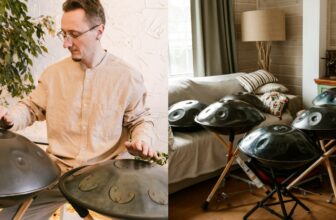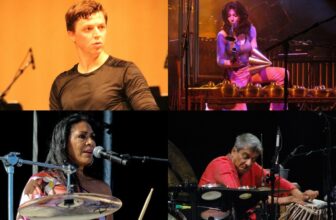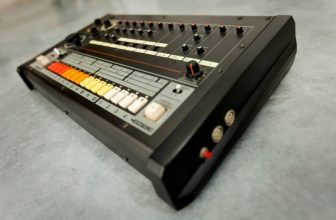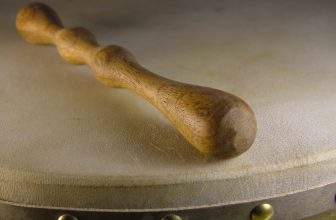Mbira vs Kalimba – What Are the Differences?
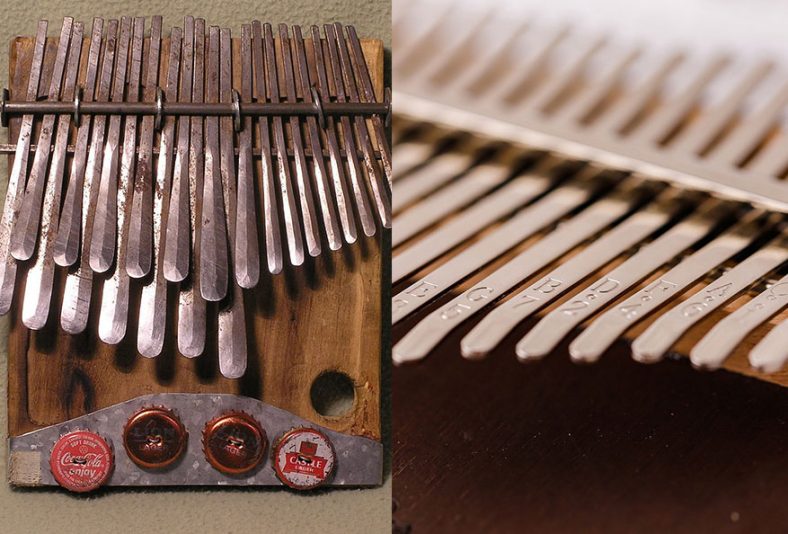
The mbira is a traditional musical instrument that originated in Zimbabwe, which is made of metal tines placed on a wooden board. The kalimba was created as a modern version of this instrument, which is much more suited to western music.
Contents
What Is the Difference Between a Kalimba and a Mbira?
A kalimba is practically a smaller and more modern mbira. Hugh Tracey, an ethnomusicologist, appreciated the sound of mbiras, which he heard while visiting Zimbabwe. But his desire was to create another version that was better for playing Western music, which was very different at the time. Basically, it was simpler.
Listen and watch this mbira player with amazement!
As a result of the differences in the music played, Tracey created a smaller mbira (a kalimba), one that had just one row of keys. This marks the main difference when compared to the mbira, which has two rows of keys.
This is what a Kalimba sounds like:
Kalimbas use the diatonic scale (7 notes). The decision to include only one was that Western traditional songs often used this scale. The mbira is not directly mapped to the Western scale, and therefore the intervals and notes are different.
Another difference that should be mentioned is that with the kalimba you create diatonic intervals through two -note combinations. This allows playing songs with harmonies, which works nicely in Western music.
The Mbira – How It Works
A mbira is a lamellophone instrument made out of a row with metal strips. These are used as keys and are attached to a hollow resonator or wooden gourd.
The length of the keys varies. Those that are longer are put in the middle. It is the length of the keys that determine the pitch. With shorter keys, you get higher sounds. With longer keys, you get lower sounds.
The keys can be made out of different metals, like spring wires or metal sheets. In the contemporary versions, homemade options use bicycle spokes, spoon handles, and practically any recycled metal object.
How To Play the Mbira
The performer will hold the resonator of the mbira with fingers placed right under it. Thumbs are used to pluck keys. After a key is plucked, tranquil and pleasant sounds are produced.
When you want to play rhythmic or harmonic sounds, it is possible through two methods:
· Simultaneously plucking keys
· Alternating plucks
You can overlap tones when you want to create effects that are quite similar to orchestras. Both sound and quality can be very rich and full.
The kalimba can be a great starting point if you want to play the mbira and it seems too challenging. Even so, the principle for the two is very similar and you can easily learn the mbira in a few months.
Mbira Buzz
When playing the mbira, an essential sound you hear is the buzz. This adds context and depth. It is also very useful at increasing volume. The buzz is a very big part of music in Africa.
However, it is very difficult to be described, as it is unique to the instrument. In fact, when you hear the instrument live for the first time, the buzzing might be a bit distracting. After some time though, it will become clear why it is so important.
Mbira Tunings
Several mbira tunings are available. In fact, every group of villages where the mbira is played uses specific tuning.
The mbira pitch varies from one region to the next and from an individual to another. This is because tuning is subjective. Every instrument features a range between 3 and 3.5 octaves, and they are not necessarily mapped directly to Western music scales.
What Type of Sound Does a Mbira Make?
The mbira has a unique tone that can be described as being inharmonic. It is a dissonance that happens as the result of the motion created as tines vibrate in connection with adjacent tines. Initially, the sound is very complex. When you want to increase vibration variety, you can attach seashells or metal bottle caps to the instrument’s body. Other sound modifications are also possible.
What Is a Mbira Used For?
The mbira was originally used during ceremonial functions, such as funerals and weddings. In addition to being used for religious purposes, they were also used in ceremonies honoring people of significance in the community.
Mbiras were also sometimes used during spiritual festivities in an attempt to attract the spirits of their ancestors. When they felt the spirit had appeared, the singing, music, and dancing stopped. It then started again after the spirit left.
What Is the Most Distinct Feature of Mbira?
The way in which you play the mbira is distinct. You stroke or pluck keys with your thumbs. The resulting sound is reflective and pastoral, reminiscent of the traditions behind its creation.
The chamber of the instrument or its sound box will amplify or enhance the sound.
Different Types of Mbiras
The most common variants of mbiras are:
· Mbira Dzavadzimu – Frequently used during social gatherings and religious ceremonies. It is made out of 22 to 28 keys.
· Mbira Matepe – Features 26 keys.
· Mbira Nyunga Nyunga – Usually made out of 15 keys and originated from Manicaland. It was mainly used for entertainment purposes during commemorations and social gatherings.
· Nhare – Features 23 or 24 keys. The nhare was traditionally used in communicating rituals as participants tried to get in touch with Nyadenga or Musikavanhu.
· Njari Mbira – Features 30 to 32 keys.
Outside of Africa, kalimbas are much more popular. In fact, it is rare to find traditional mbiras in Western countries.
Famous Mbira Players
As expected, there are not many traditional mbira players in the world that are still active. Some examples include:
· Stella Rambisai Chiweshe
With an experience of over 35 years, Stella has been playing at forbidden ceremonies even while Zimbabwe was a Rhodesian colony. Ceremonies then were forbidden because of the colonial government, which banned the use of the instrument. The reason behind the ban was a fear that the instrument had magical powers. Even so, Stella’s local reputation kept growing and she was a constant presence at ceremonies.
· Chaka Chawasarira
A truly versatile performer, Chaka Chawasarira is experienced in several indigenous instruments. His career also involved politics and education.
· Sekuru Gora
Thomas Wadharwa (commonly known as Sekuru Gora) passed away in 2002 and is one of the world’s most famous mbira players ever. He is so popular that he is known all around Zimbabwe. The first time he played a mbira was when he was 14 and he showed instant talent.
· Francis Bebey
Francis Bebey was a UNESCO diplomat and radio journalist. Eventually, he devoted his life to the pursuit of music. He became very successful during the seventies because of his humorous and popular songs.
Several other Mbira players can be found in Africa. Outside the continent, Western Canada is your best bet of finding people that play the mbira. Ever since the ‘80s and ‘90s, people have enjoyed it and passed on the knowledge to following generations.
Summary
As you can see, the mbira is a very attractive and unique musical instrument. It is going away because of the increasingly lower number of players.
Outside of Africa, it will be very difficult to find someone to play it. However, if you want to, you can learn it very fast since it is quite similar to the kalimba.
Featured Image (Left) by: CC BY-SA 3.0, Link

